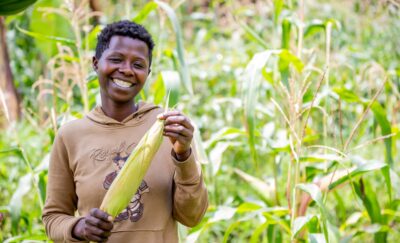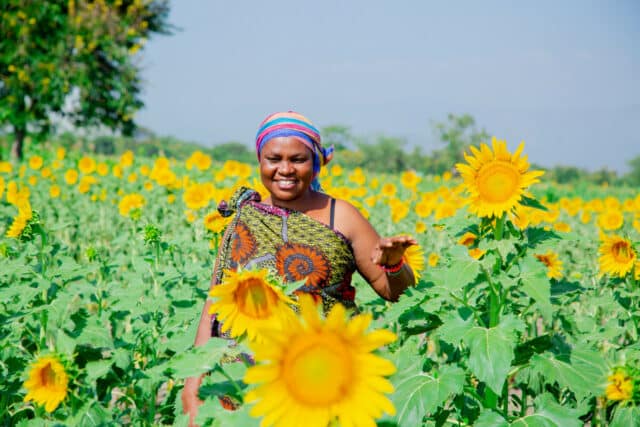News
2 March 2020
How adopting good aquaculture practices is boosting farmers’ income
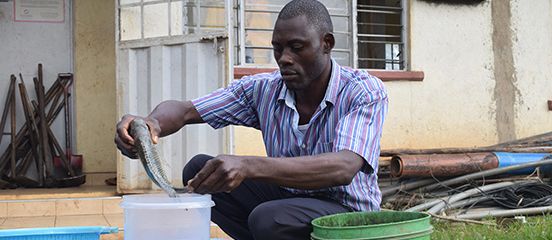
After a few seconds of clapping, ripples appear in the pool of water as shoals of tilapia flap their fins excitedly towards the edge of the fishpond for their morning meal. Shortly after Eliakim strews the floating pellets on the water surface, a bubbling sound ensues as gaping mouths devour them with relish. At only five months old, the fish in one pond at Bunyore Riverside Agricultural Development in Vihiga County already weigh 350 grams each.
Bunyore Riverside Agricultural Development Farm is one of the project beneficiaries enrolled in Farm Africa’s Piloting Market-led Solutions to Aquaculture Development in Kenya project, funded by Msingi East Africa. The initiative liaises with three private sector players in the aquaculture industry to increase the volumes of fish produced by small-scale farmers and to improve their access to markets by developing clusters of farmers who together can offer a consistent supply of fish.
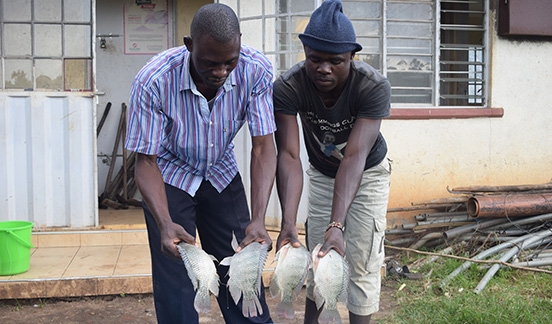
The project has highlighted to project participants the importance of increasing the size of fingerlings (young fish) stocked, which Farm Africa and WorldFish research has shown to reduce fish farmers’ production cycles and input costs, and improve productivity and profits.
“The growth rate has been faster and the mortality rate negligible since we started stocking our ponds with five-gram fingerlings. Our production cycle is now seven months, down from nine months when we used smaller fingerlings weighing about two grams. This has also increased the harvest weight by up to 100 grams as the current harvest weight stands at 500 grams from 400 grams,” notes Eliakim Wakhu, the Farm Manager.
He hails the youth aquaculture agent extension model that was adopted by the private sector partners Unga Farm Care East Africa and Pioneer Fish Farm for being a crucial source of technical support. “Farmers lose morale easily when they lack a go-to person for technical advice. Aquaculture is very technical, making extension a very essential element to it,” he says.
The agents have also been instrumental in connecting farmers to input suppliers and traders. As a result of their engagement, the 120 farmers taking part in the Msingi project recorded a 56% increase in their uptake of quality feeds from 21% at baseline, with 4,755 kg of Unga commercial feeds having been off-taken. At the project close, 25,950 five-gram fingerlings had been stocked by 40% of the farmers.
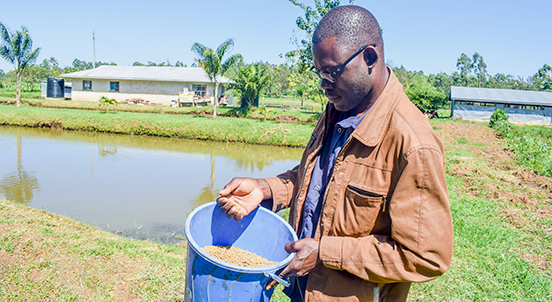
The nine-month pilot also saw farmers selling 7,150 kg of tilapia and 2,168 kg of catfish to traders. Besides helping the farmers to supply fish to the market through staggered production, the five clusters formed by the Msingi Project have been helpful as the members share ideas, offer technical and moral support to each other and source for markets collectively.
One of the challenges facing fish farmers is the high cost of commercial feeds. During his last production cycle, Eliakim paid Ksh 90,000 for feed for the 3,000 tilapia in three 300m² ponds. He points out that despite the high cost of inputs, with the right size and quality of fingerlings and good quality feeds, the farm has been operating profitably.
“I used Ksh 30,000 to buy 1,000 five-gram fingerlings, Ksh 90,000 for the feeds, Ksh 60,000 for my permanent farm hands and Ksh 2,000 labour costs during the one day harvesting exercise.”
He later sold 2,000 pieces weighing 495 grams at Ksh 400 per kilogram to local hotels and local traders, as well as in Nairobi. He is currently preparing to harvest the remaining 1,000 pieces, which are in a holding pond, and begin another production cycle.
Other best practices that have been adopted by the farmers in the Msingi Project include post-harvest handling, pond management, which includes maintenance, and rehabilitation, pond harvesting and site selection.


